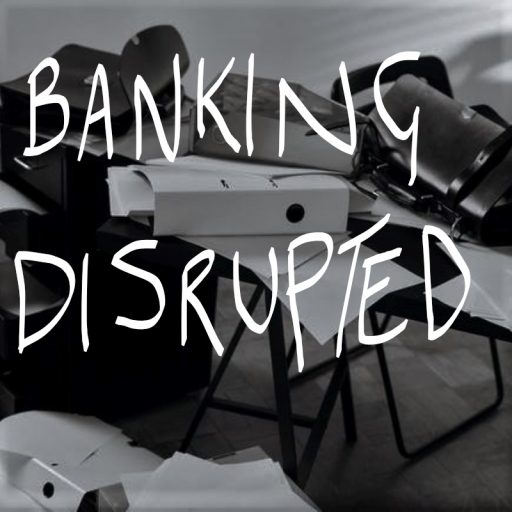There are over 163 million payment cards in circulation in the UK, including credit, debit and commercial cards (b2b). These payment instruments are the main staple for banks, as everyday usage drives volume-based income for these institutions. Cards is also a significant growth market for financial services providers, as transaction volumes continue to grow year on year, as they displace other payment methods like cash and cheques.
Since the creation of the credit card back in the 1950s, it continues to be one of the payment methods of choice globally. The enduring nature of cards is driven by the robust consumer protections that are in place should problems arise with goods and services purchased. Consumers can rapidly chargeback any transactions they do not recognise, or for goods and services that do not meet the terms of purchase.
Debit cards are also going through an evolution, becoming either contactless or virtual in the form of wallets. There are a staggering number of debit cards being used in the UK, with 97 million cards in circulation in 2019/2020, and 86% of these are enabled for contactless transactions. There is a significant opportunity to innovate everyday transactions, as the pandemic has helped oust cash in favour of tapping. But the world is changing, so is the system of payment acceptance and the underlying technology.
Online transactions continue to grow at a faster pace than face to face transactions, in part due to the pandemic, and due to newer payment methods like Apple Pay, Klarna, Stripe, Amazon Pay becoming more mainstream. These innovations have far reaching implications for the industry.
Card Usage Evolution
Some insight into how cards will be used going forward, can be gleaned from looking at how card management features are being added to mobile applications. Both debit and credit cards are becoming more mobile phone centric, with more features being controlled by apps. This gives cardholders more flexibility over how the card is used across different environments, as well as having the ability to manage card features on the move, e.g. changing the PIN, changing spend limits, and blocking a card from being used, to name but a few.
Although still in its infancy, when it comes to adopting new ways of transacting, the digital wallet from Apple, Apple Pay is a good indication of how these products will evolve. Once again, Apple takes their obsession with customer delight to the banking world under the banner of “Cashless made effortless”. They illustrate how a 50-year-old product can be revamped and made more appealing by changing how consumers interact with their “physical” wallet. Customers who have a valid Apple ID can set up the app on their iPhone and then add their credit/debit cards. After completing the Apple pay set-up, users can immediately perform cardless/contactless transactions with their iPhone.
These digital wallets or apps can also help with industry challenges like fraud and security by enabling the immediate “report a lost card” feature, enabling better authentication through facial recognition and other biometrics. There is also the ability to allow more controls on spending at the point-of-checkout, allowing spend to be managed by category, retail store or type of product. This is a handy feature if running a “family” of cards within a household, where restrictions on spend can be managed at the user level.
All the developments we have seen in the digital wallet space are set to position the card as more of an invisible, but crucial backbone in payments. If we borrow from the world of film, the card emulates some of the changes we have seen in Hollywood, where prominent actors have moved “off-camera” to more behind the scenes roles in the form of directing and producing. In this newer “invisible and digital” guise, these payments types ultimately lead us to a more cashless society, where we see more growth in capabilities that support peer-to-peer cash sharing, mobile wallets, and even cryptocurrency for everyday transactions.
Another way credit cards will be used in the future may be carrying out payments with bots and AI assistants. Existing AI assistants like Google Now, Amazon Echo, and Siri could be used to make payments for goods that can be delivered to your doorstep. Again, these all allow for the payment to be embedded into technology, and the old plastic form factor does not feature so prominently. These AI channels represent a significant opportunity for the card market, as even social media giants like Facebook are keen on the idea of bot-powered payments.
The Look & Feel Factor
Cards in the future need to offer greater convenience, enhanced security and real-time fraud protection. This is not to say that current credit cards do not provide all of these, but there is room for improvement as fraudsters become more creative when duping consumers into sharing their card details. Throughout the pandemic last year, we saw fraud numbers increase significantly, with the BBC reporting £34.5m of cyber fraud occurring across 6,000+ cases. Preventing these types of scams has got to feature in any product re-design, as the industry continues to pay a hefty price for criminal activity.
Experts believe that no matter what innovations occur in the card market, one thing is for certain: under the theme of sustainability and protection of the environment, plastic will have to go. After all, its primary function is housing the chip that communicates with POS terminals to process payments. It is expected that cards will be produced using more sustainable materials, especially if we reflect on the amount of plastic being used to manufacture cards annually, which is the equivalent weight of 150 Boeing 747s planes. Such an astronomical amount of plastic is undoubtedly putting a strain on the global fight for sustainability. Newer options like manufacturing from ocean plastics, other biodegradable and recyclable materials may be the key to eco-friendly cards.
Contactless, or RFID (Radio Frequency Identification) chips, are rice grain sized and can be implanted into several wearable devices, including rings, watch straps, bracelets, key fobs, etc. So, there could be a scenario where the £45.00 contactless limit stays in place permanently, which means the only thing you need to take with you when dashing out for quick purchases, or getting coffee on the go, are your keys or jewellery etc. These developments allow consumers to use near-field communication technology to give the convenience of making payments without pressing any buttons.
Progressive & Inclusive Loyalty Schemes
In a cashless or card-less society, that may well see cards becoming more and more invisible, the world of card-based loyalty also needs to be revamped. There is no doubt that loyalty schemes are arguably one of the most popular credit or debit card features. It is the reason customers decide on a particular card over another. But loyalty schemes as we know them could be changing in the near future to encompass newer and more rewarding features.
Firstly, we could see more loyalty schemes with greater flexibility in fee structures, with interest rates varying based on usage or specific goods and services being purchased. Secondly, as credit card technology changes, loyalty vouchers need to become digital to enable faster collection and redemption at the point of checkout. One of the best examples of this, even after all these years, is the Boots Advantage scheme in the UK. Here customers can use either a card payment at checkout or use their reward points. There is only one downside with this scheme, in that these points can only be earned and spent in Boots. Going forward, more options are required to be able to use points across a broader ecosystem of retailers.
Lastly, loyalty in the cards industry needs to take greater account of partnership models beyond the co-branding efforts of the past. Here, more mutual partnerships between companies to help inter-operable rewards need to be deployed to make loyalty worthwhile. Customers should be spoiled for the choice in terms of where they can earn/redeem their rewards points, which is, after all, the primary mechanism for making this method of paying attractive. Who knows one day, rather than Avios there could be galactic points to send into space.
Preparing for Change
Credit card companies and banks will have to modify the mode of their operations to accommodate future changes in credit and debit card use. Payment providers should plan for more collaboration to bring customised experiences to their customers, in the form of loyalty or new features that make shopping safer. Also, with the card becoming increasingly invisible, more strategies need to be devised to make certain cards appear “top of the wallet”.
With permission, customer data can easily be shared to get access to new products and services, as pre-filling applications should become the norm, making things like tedious balance transfers a thing of the past. The most important element of any strategic re-think around card payments is proximity; research has shown that, on average, a person’s mobile phone is never more than 33 inches away from them. New strategies need to be mobile-first by design.
Platforms for instant credit and long-term credit management is one aspect that will be beneficial to all consumers. The use of shared data gives better visibility of someone’s ability to pay, making it much easier to present the right lending structure. This data driven approach allows a more efficient transition between short-term lending through cards to more long-term loan options. This is the point at which banks need to think about consumer lending as extending a line of credit that can be used across multiple products, and that choice is given to consumers to decide what works best for them, in each circumstance and in what way. This also has the added benefit of empowering customers to take control, responsibility for their financial futures more proactively and safely.
Parting Thoughts
Our drive to be a completely cashless society may have seemed unreal at present, but recent technology and societal changes have helped speed things up somewhat. These trends have long-range implications for the card industry and open a world of opportunity in the form of sustainability, broader transaction services, goods tracking, ecosystem loyalty, better security, consumer awareness and enhanced protection from fraud.
The future of credit cards and their use in transactions and processing payments will undoubtedly face modifications. It is left for the key players like card companies and banks to make it convenient, innovative, and profitable for all. It becomes imperative to re-define the cards business model more urgently, as the improvements in the payment aggregation and processing space, driven by Open Banking, creates greater competition for incumbents. This era will create challenges for both card issuers and acquirers as the likes of Stripe have given retailers and consumers the most options at the online checkout. This is perhaps the more significant challenge that needs to be mitigated, as losing influence at the shopping cart can be very detrimental to staying connected with customers over the longer term.




